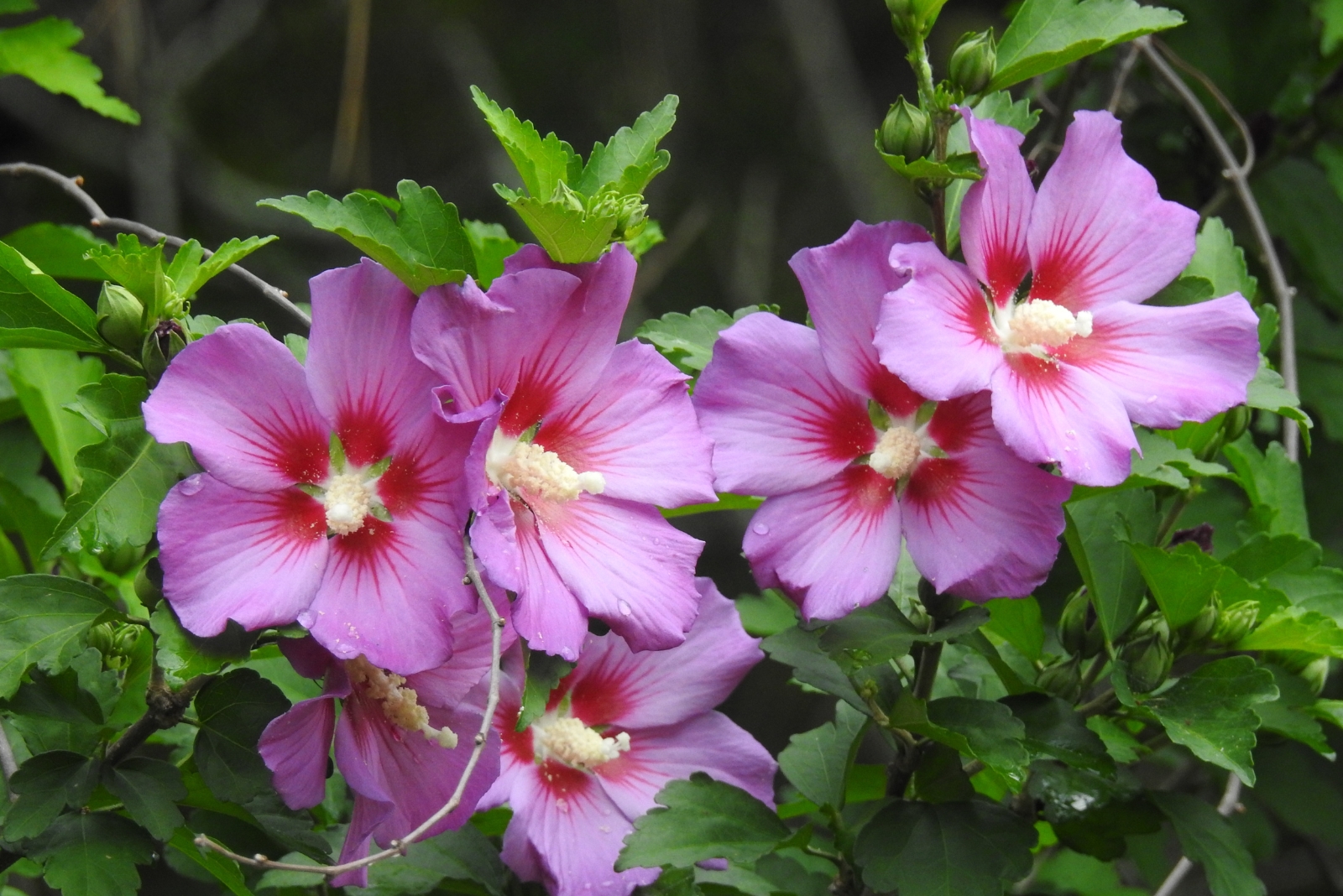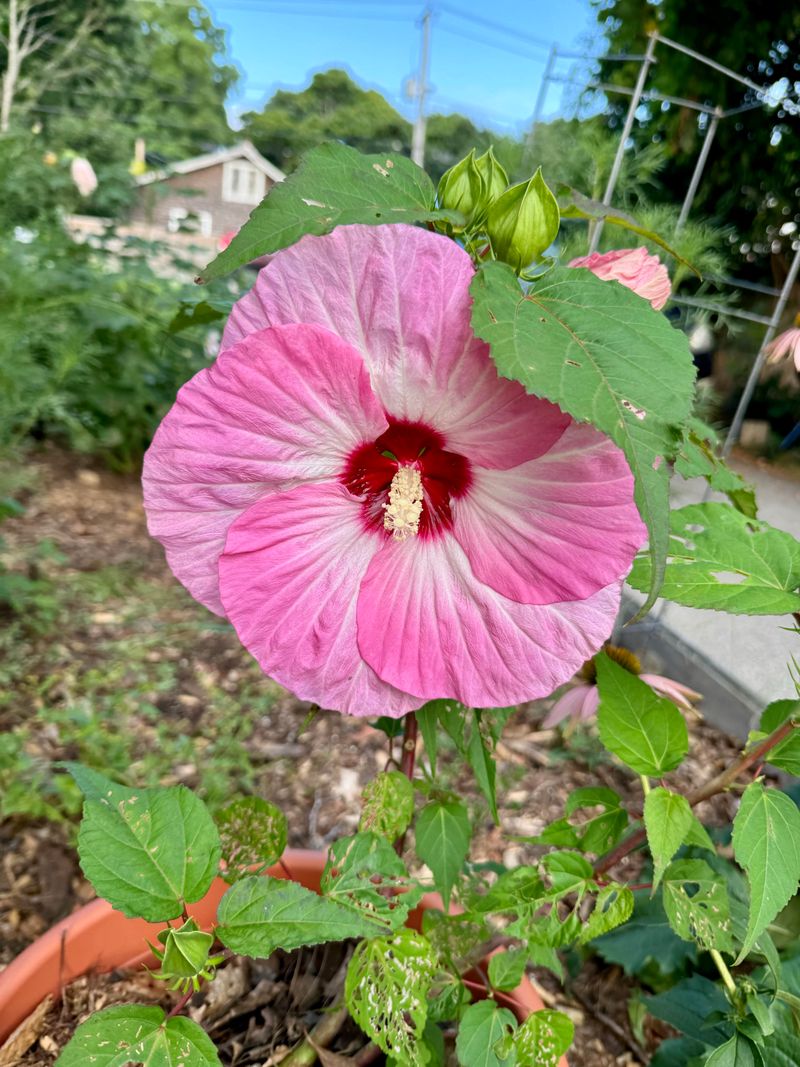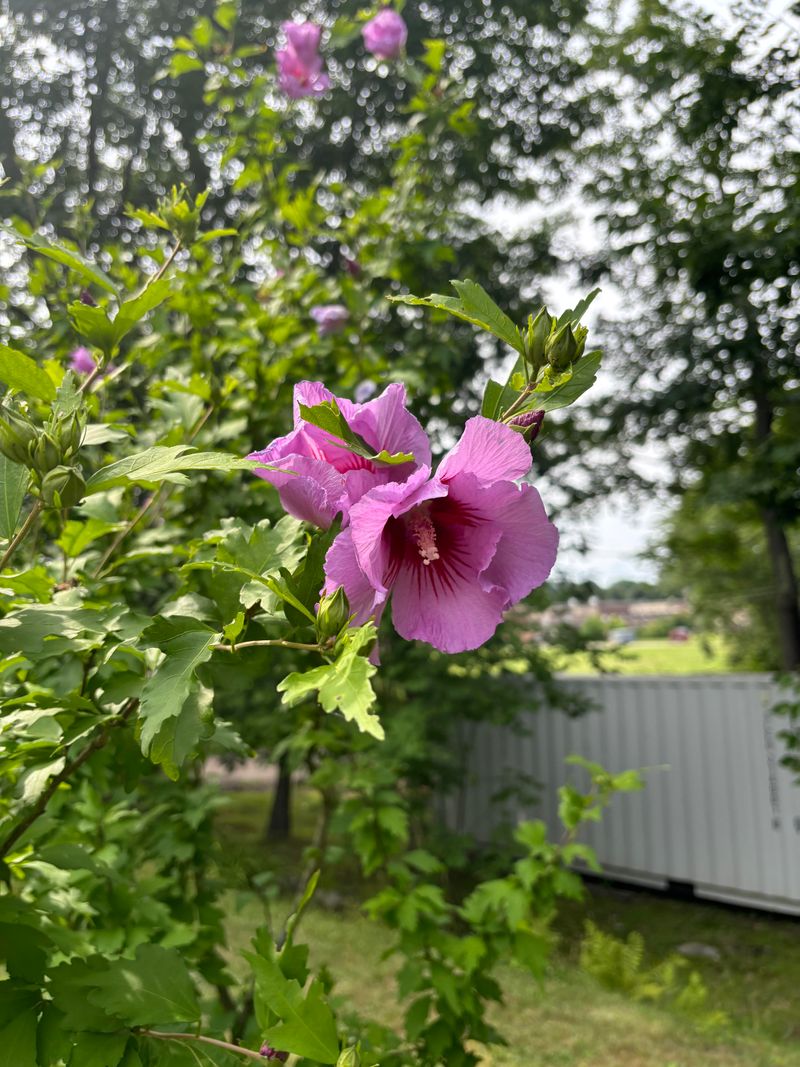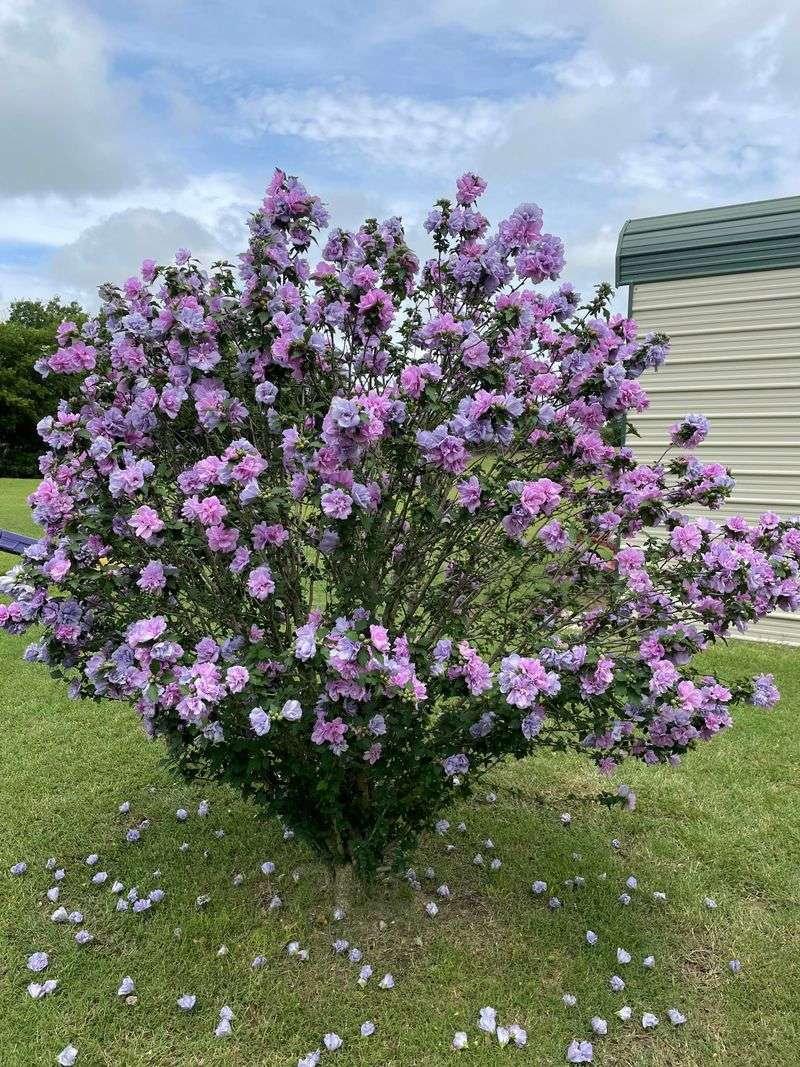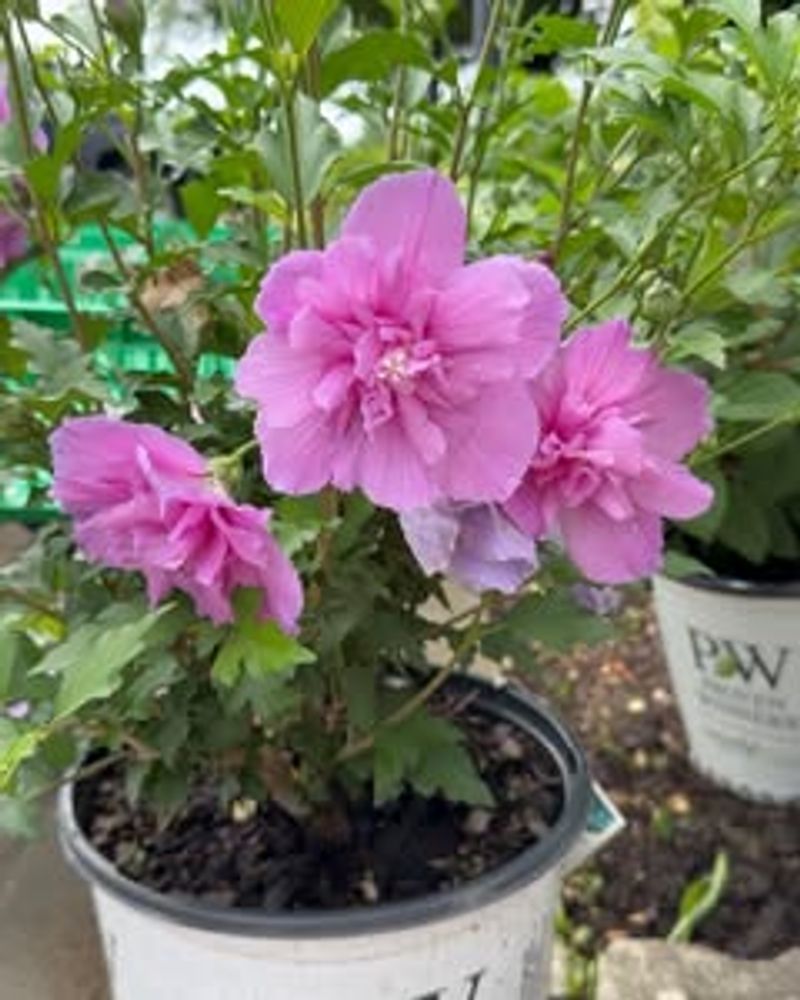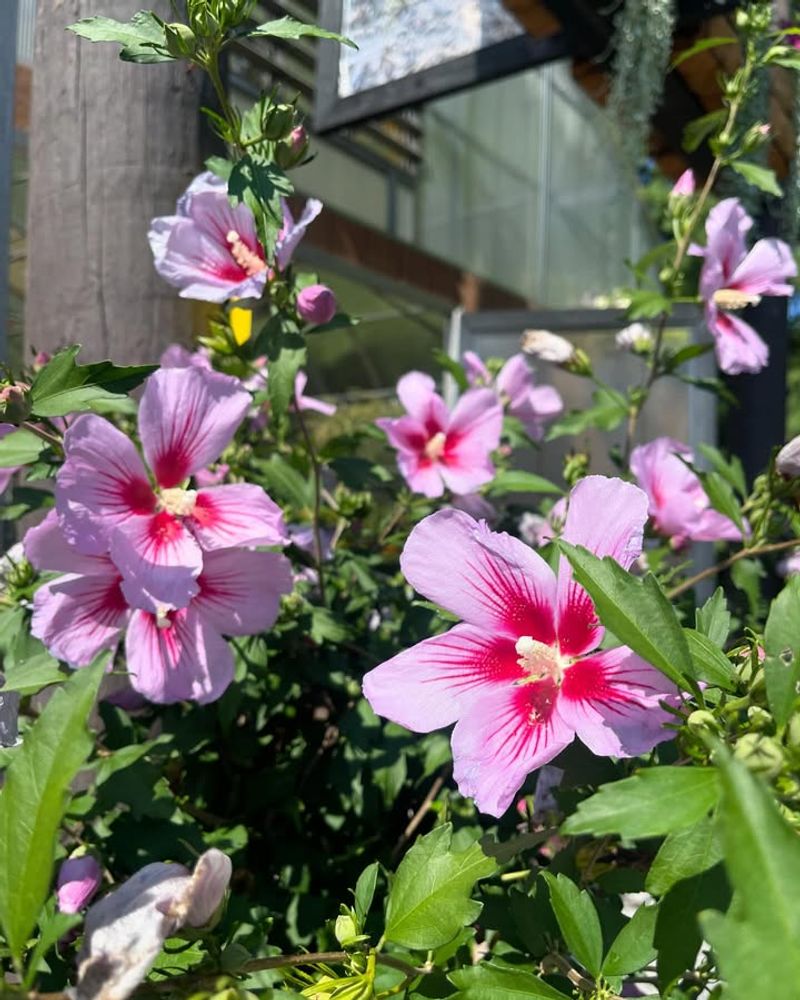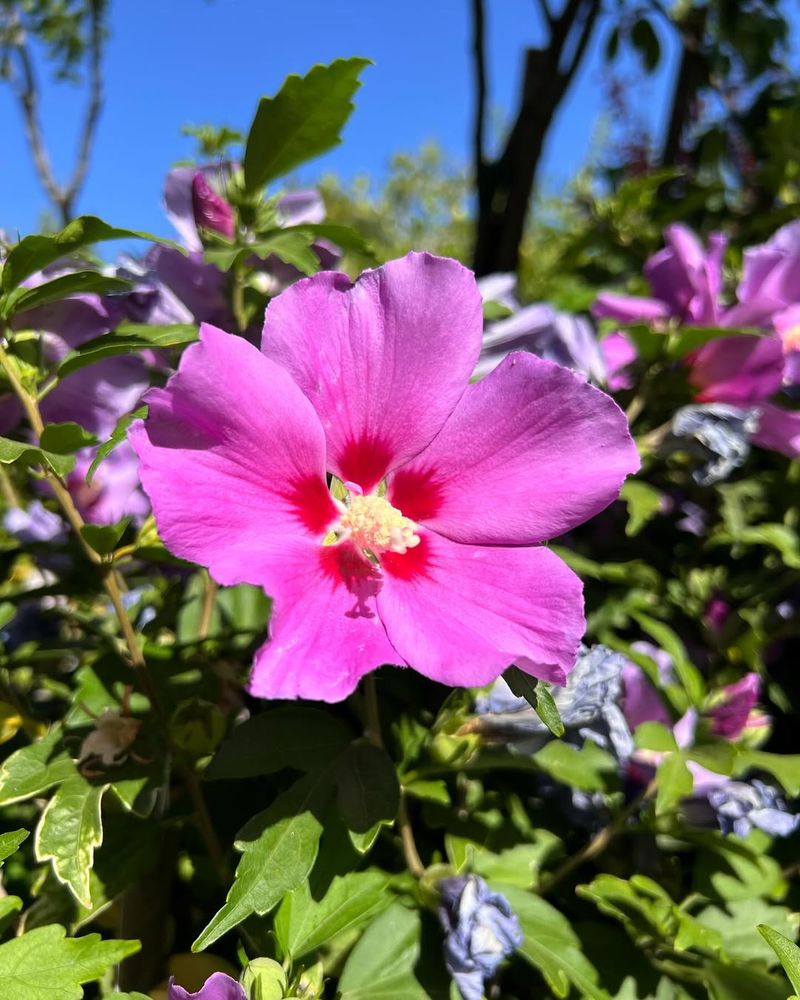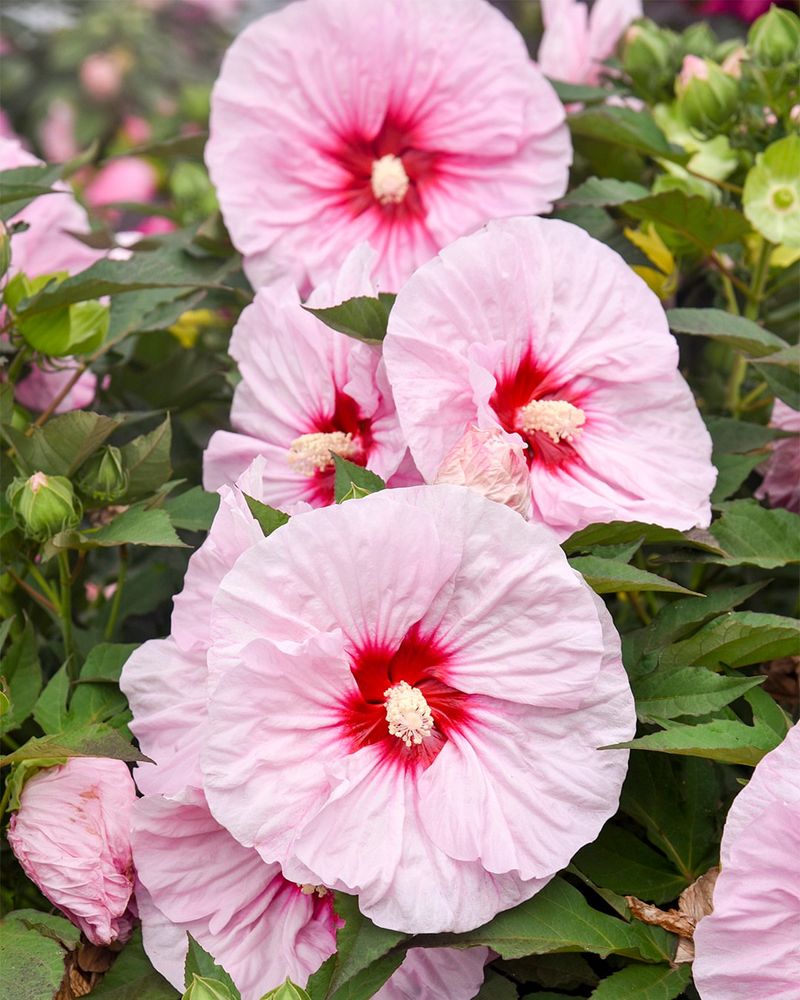You’ve probably seen this hardy shrub showing off in Missouri yards — all decked out in pink and acting like it owns the place. It’s tough enough to handle our unpredictable weather yet still manages to bloom like it’s on vacation.
Meet the Rose of Sharon, the showstopper that proves resilience can be gorgeous. If you’re looking for a low-maintenance plant with major “look at me” energy, this beauty’s got you covered.
1. Survives Missouri’s Wild Weather Swings
Extreme temperature changes don’t scare this shrub one bit. Missouri weather can be unpredictable, swinging from freezing winters to scorching summers, but the Rose-of-Sharon handles it all with ease.
Gardeners across the state appreciate how this plant bounces back after harsh conditions. Cold snaps that kill other flowering shrubs barely slow it down.
Once established in Missouri soil, it develops strong roots that anchor it through storms and droughts alike, making it a reliable choice for any landscape.
2. Blooms Keep Coming All Summer Long
While many shrubs bloom for just a few weeks, this one puts on a show from June through September. Each morning brings fresh pink flowers that open up to greet the day, creating a constant display of color.
Missouri gardeners love how the blooms keep their yards looking vibrant even during the hottest months. Individual flowers last only a day, but new buds replace them so quickly you’ll hardly notice.
That continuous flowering cycle means your landscape stays colorful throughout the entire growing season without any extra effort on your part.
3. Handles Drought Like A Champion
Water bills can skyrocket during Missouri summers, but this shrub won’t add to your expenses. After its first year in the ground, the Rose-of-Sharon develops deep roots that find moisture even when rain is scarce.
You won’t need to drag hoses around or worry during dry spells. The plant’s natural toughness means it keeps growing and flowering even when other garden plants start wilting.
Missouri homeowners with busy schedules appreciate plants that don’t demand constant watering, making this shrub a practical choice for low-maintenance landscaping.
4. Attracts Butterflies And Hummingbirds Daily
Watching hummingbirds zip around your yard never gets old, and this shrub brings them in regularly. The trumpet-shaped pink flowers are perfect landing pads for butterflies and irresistible to tiny hummers searching for nectar.
Missouri wildlife benefits from gardens that provide food sources throughout summer. Your Rose-of-Sharon becomes a mini nature preserve right outside your window.
Kids especially love observing the constant parade of winged visitors, turning your backyard into an outdoor classroom where nature comes alive every single day.
5. Grows Tall Enough For Privacy Screening
Privacy matters, especially when neighbors are close by, and this shrub can reach eight to ten feet tall. Plant several in a row and you’ll create a living fence that looks way better than wood or metal.
Missouri homeowners often use Rose-of-Sharon to block unwanted views or define property boundaries naturally. The dense foliage fills in nicely during summer, providing screening while still looking attractive with its pink blooms.
Unlike man-made fences that need painting or repairs, your living privacy wall just keeps getting fuller and more beautiful each year.
6. Tolerates Poor Soil Without Complaining
Not every yard in Missouri has perfect, rich soil, but that won’t stop this tough shrub. Clay-heavy ground, rocky patches, or less-than-ideal dirt won’t prevent the Rose-of-Sharon from thriving and producing flowers.
Gardeners who struggle with difficult soil conditions finally find success with this adaptable plant. It doesn’t demand special amendments or expensive soil improvements to look its best.
Simply dig a hole, plant it, and watch it grow—even in spots where other shrubs have failed before, making it perfect for challenging landscape areas.
7. Requires Minimal Pruning And Maintenance
Busy people need plants that don’t demand hours of care, and this shrub fits that bill perfectly. A quick trim in late winter or early spring is all it takes to keep your Rose-of-Sharon looking neat and healthy.
Missouri gardeners with packed schedules appreciate how forgiving this plant is about maintenance. Skip a year of pruning and it won’t throw a tantrum or stop blooming.
The natural shape is already attractive, so you’re really just removing dead branches or controlling size if needed, making it ideal for weekend gardeners.
8. Resists Most Pests And Diseases Naturally
Dealing with plant diseases and bug infestations is frustrating, but the Rose-of-Sharon rarely has serious problems. Its natural toughness means you won’t be constantly spraying chemicals or fighting off destructive insects.
Occasionally Japanese beetles might nibble on leaves in Missouri, but they rarely cause lasting damage. The plant’s vigor allows it to outgrow minor pest issues without intervention.
Fungal diseases that plague other shrubs typically leave this one alone, especially when planted in sunny spots with good air circulation around the branches.
9. Adapts To Sun Or Partial Shade Easily
Finding the perfect spot for plants can be tricky, but this shrub gives you options. Full sun produces the most blooms, but the Rose-of-Sharon still flowers nicely with just four to six hours of sunlight daily.
Missouri yards often have areas with shifting light patterns throughout the day. This flexible shrub adjusts to whatever conditions you can offer without losing its charm.
Gardeners love having a reliable plant that performs well in various locations, whether that’s a bright south-facing border or a spot with afternoon shade protection.
10. Self-Seeds For Free New Plants Each Year
Who doesn’t love free plants? After blooming, the Rose-of-Sharon drops seeds that often sprout into new shrubs the following spring. Missouri gardeners can transplant these volunteers to other areas or share them with friends and neighbors.
Some folks consider the self-seeding a bonus feature, while others prefer to deadhead spent flowers to control spreading. Either way, it’s nice having the option.
Young seedlings are easy to dig up and relocate when they’re small, giving you an endless supply of new plants without spending another dollar.

